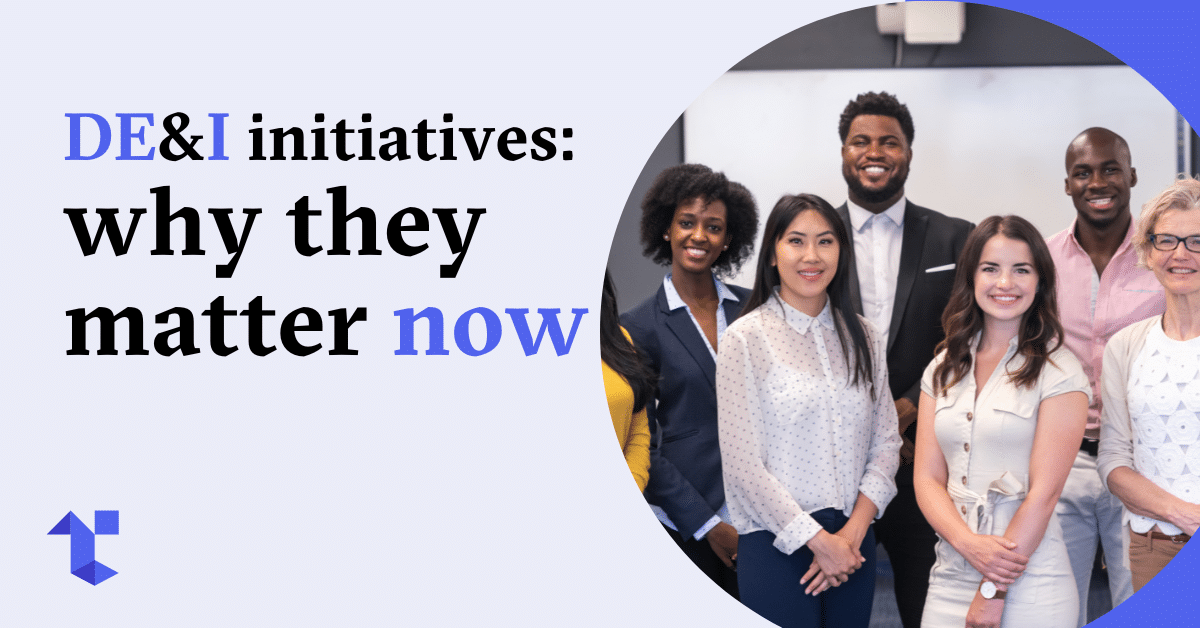DE&I Initiatives Explained: Why They Matter Now
September 11, 2024
Addressing social and racial injustice in society is a shared responsibility. While everyone has a role, organizations hold a special duty to foster a more just world. Organizations are part of a broader social change ecosystem. For leaders to rise to this challenge, capacity building, skill enhancement, and disrupting entrenched systems are essential. Engaging people and continuous learning play vital roles.
Understanding DEI Initiatives
Exploring DEI (diversity, equity, and inclusion) initiatives reveals their impact and implementation. Many people conflate diversity, equity, and inclusion, but these terms, while aiming to create a more equal and just workplace (and society), have important distinctions.
Defining Diversity
Diversity in the workplace means welcoming individuals from various backgrounds. A diverse workplace should include employees with different ages, ethnicities, genders, religions, and sexual orientations. It also covers less visible attributes, such as considering candidates with learning differences equally as part of diversity efforts.
Defining Equity
Equity, an extension of diversity, involves ensuring equal opportunities for all within an organization. It aims to prevent discrimination, bias, and harassment. Equity can be better understood by the analogy of people trying to watch a game over a fence of varying heights. Equality would give everyone the same box to stand on, but that’s not fair. Equity gives each person the number of boxes needed based on their height, ensuring everyone can see the game.
Defining Inclusion
Inclusion ensures that employees feel like they belong. Leaders foster inclusivity through strategies promoting a culture of acceptance, civility, and respect. Inclusion also means providing necessary support for employees’ career development and helping them reach their full potential. Inclusive initiatives allow all employees to contribute authentically to workplace culture.
Linking DEI Principles
An analogy can link DEI principles: Diversity is inviting everyone to the party. Equity means allowing everyone to suggest songs for the playlist. Inclusion ensures everyone has room to dance or feels comfortable opting for alternative activities.
Benefits of DEI Initiatives
Increased Profitability
Establishing and implementing DEI initiatives can be intensive, but the effort is worthwhile. Benefits include increased profitability, as DEI initiatives can entail considerable costs but often result in higher profitability. Analysis shows companies with gender-diverse executive teams are more likely to achieve above-average profitability.
Better Recruitment and Retention
A significant portion of the workforce desires to work for companies that value diversity, equity, and inclusion, leading to better recruitment and retention. A sense of belonging drives employees to contribute authentically, increasing productivity and producing better outcomes.
Improved Productivity
DEI initiatives help employees embrace differences and manage conflict effectively, fostering trust and improving workplace relationships.
Creating and Implementing DEI Initiatives
Recognizing the Benefits
Recognizing DEI benefits is straightforward, but creating and implementing such programs can be complex. Each organization has a unique strategy for DEI, considering specific characteristics like the industry’s history of exclusive hiring practices. Effective DEI programs are genuine and evolve alongside organizational and societal shifts. Setting measurable, aspirational goals aligned with organizational DEI objectives is essential.
Steps to Create DEI Initiatives
DEI initiatives aim to create a more inclusive workplace, offering benefits like improved productivity and retention. Steps to create a DEI initiative include:
- Compiling employee demographic data
- Identifying areas of concern
- Analyzing existing policies
- Proposing solutions
- Soliciting support and funding
- Implementing programs
- Measuring progress and adjusting as needed
- Communicating results to stakeholders
- Promoting continuous improvement through feedback
HR Professionals’ Contribution
HR professionals contribute to DEI initiatives by researching industry practices, advocating for employees, managing budgets, and ensuring fair hiring processes. Setting deadlines, communicating expectations, and involving various departments ensure cohesive implementation.
Examples of Effective DEI Initiatives
Examples of effective initiatives include:
- Using social media to share DEI efforts
- Creating employee resource groups
- Hiring for diversity using blind resume screening
Promoting diversity, equity, and inclusion can be achieved by fostering a sense of belonging, soliciting input, and providing necessary resources. Securing funding, holding managers accountable, and tracking progress are critical steps. Other examples include celebrating diverse holidays, issuing inclusive statements from leaders, establishing mentorship programs, and revising the employee value proposition.
share this blog
STAY CONNECTED
Sign up for our newsletter for the latest Tesseon information.
Related Blogs
What our clients are saying about us
Disclaimer: The information provided on this blog page is for general informational purposes only and should not be considered as legal advice. It is advisable to seek professional legal counsel before taking any action based on the content of this page. We do not guarantee the accuracy or completeness of the information provided, and we will not be liable for any losses or damages arising from its use. Any reliance on the information provided is solely at your own risk. Consult a qualified attorney for personalized legal advice.

